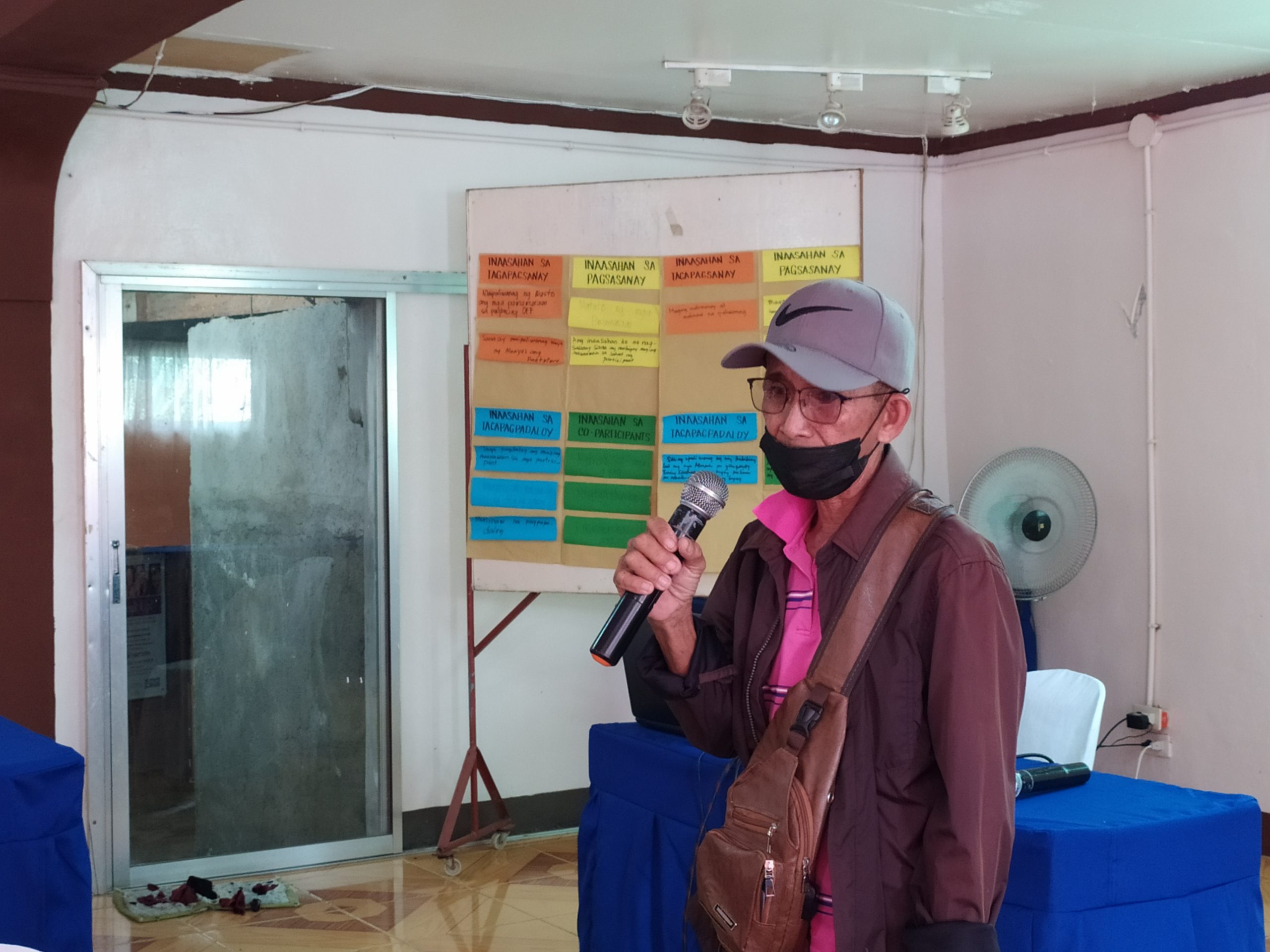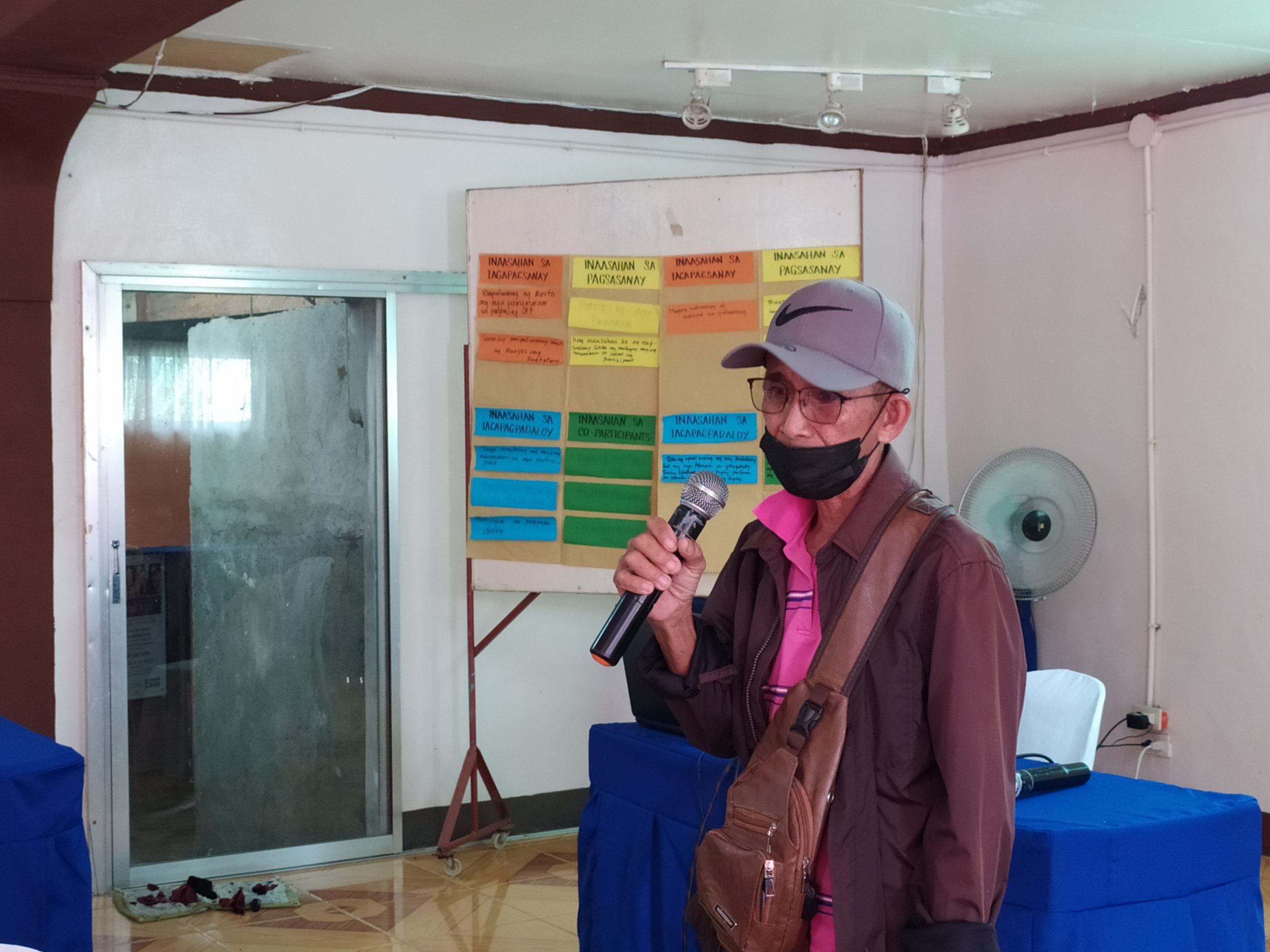OCCIDENTAL MINDORO, June 2, 2022 – Filipino farmers are greatly affected by the fertilizer price hike as prices started to spike in March 2021 due to the increase in demand for fertilizers worldwide partnered with a tight supply of natural fuel forcing some major producing plants to cut production of fertilizers or completely shut their operations.
As a long-time net importer of inorganic fertilizer with low feasibility of domestic production coupled with the effects of the worldwide pandemic and higher freight costs, the local agriculture and Filipino farmers were badly affected by the price uptrend.
As prices of agricultural chemical inputs continue to skyrocket, Mr. Jaime delos Santos, Chairperson of Calawag Foliar Fertilizer Farmers Association (CFFFA), turned to partial organic farming and was able to cut 51.4% of input costs versus relying on purely chemical farm inputs.
(To learn more about the interventions and training received by CFF FA, read https://saad.da.gov.ph/2021/11/occmin-farmers-to-pursue-organic-foliar-fertilizer-production)
The DA’s response
The Department of Agriculture (DA) agencies, in tandem with State Universities and Colleges (SUCs), have started implementing the Balanced Fertilization Strategy (BFS) Program – a combination of organic and inorganic inputs use and other forms of strategy (i.e. cover cropping or green manuring, individual farmer soil fertility map, improve cropping systems, etc.) to attain the maximum potential of farmlands while maintaining soil fertility and structure.
The program also aims to address problems of land degradation and decline in soil fertility and to aid in the fertilizer price increase through adjustments in the cropping and management systems in farming.
Recently, DA through the Fertilizer and Pesticide Authority (FPA) coordinated with the Special Area for Agricultural Development (SAAD) Program to introduce the implementation of the BFS last March 22-24 in the municipalities of Nabunturan, Monkayo, and Lanak, Davao de Oro to encourage the farmers to use farm wastes such as chicken manure and leguminous crops as fertilizers.
But even before the implementation of BFS, there are a handful of farmers who have already started to utilize organic inputs for their farms and are aware of its benefits. However, it is not practiced by the majority of Filipino farmers.
As traditional fertilizers continue to be far from being affordable, Mr. delos Santos saw an opportunity to try organic farming and see if it can be a solution to a cheaper farming cost.
Inorganic vis-a-vis Organic farming
One of the advantages of using inorganic inputs is having a higher yield compared to organic fertilizers. However, using chemical fertilizers has disadvantages in the long run as farmers notice land deterioration and depleted soil nutrients which require more fertilizer application every cropping, hence an increase in farming cost.
On the other hand, organic inputs improve the soil texture which leads to an increase in the bacterial and fungal activity in the soil, nourishing it. In addition, organic inputs are safe and not harmful to the environment.
Realizing balanced fertilization and organic pesticide use
After using purely chemical fertilizer for his rice crop inputs last planting season, the CFFFA chairperson decided to experiment on his 3,200 square meters (sqm) land during the dry season using a mix of inorganic and organic inputs produced by their association.
CFFFA received training in organic foliar fertilizer production in October 2021 courtesy of SAAD and the Municipal Agriculture Office (MAO) of Magsaysay. Mr. Delos Santos wanted to put his newly-acquired knowledge to the test.
For this new venture and strategy, Mr. delos Santos used one (1) sack of 14-14-14 or complete chemical fertilizer, two (2) 1.5 bottles of Fermented Plant Juice (FPJ) – an organic foliar fertilizer made from plant enzymes as a substitute for urea, and F1, an organic insecticide made from fermented banana stalks and fish amino acids produced by their association. This strategy is the judicious use of inorganic and organic fertilizer and pesticide and is called good agricultural practices (GAP).
For his soil preparation, he applied 14-14-14 – the only inorganic input he used as basal or the initial application of fertilizer for his rice crop (long pin variety). After two weeks, he started the weekly application of FPJ for three months.
Mr. delos Santos observed that using FPJ made the rice plants more resistant to heat and strong winds compared to crops that grow on chemical inputs. Seventy (70) days later, Jaime noticed insects hidden inside several stalks of rice plants. He applied F1 to get rid of the pests, but it still damaged some of his plants. Undaunted, he took the incident as a learning opportunity.
“Nung nakita ko na may mga insektong nakatago sa loob ng tangkay ng palay ko, naisip ko na dapat nga pala sinabay ko na agad yung F1 sa FPJ noong unang linggo ng pag-spray ko para naagapan agad ang pagdapo ng insekto,” he said.
(When I saw some insects hidden inside the rice stalk, I realized that I should have applied F1 earlier with the first application of FPJ to prevent insect infestation.)
Mr. delos Santos spent Php 3,100.00 for his first venture on his partial organic farming strategy (Table 1).
Table 1. Mr. Delos Santos’s total expenses in his second cropping practicing GAP

Compared to his last production with the use of chemical inputs, Mr. delos Santos needed four kinds of chemical products (urea, 14-14-14, 16-20-0, and 21-0-0) to fertilize 6,000sqm rice field, plus insecticides which cost him Php 11,060.00 (Table 2).
Table 2. Total expenses in using inorganic fertilizer

GAP vs Inorganic farming
On May 22, 2022, Mr. delos Santos’ 3,200sqm good agricultural practice (GAP) had an expenditure of Php 3,100.00 that yielded 26 cavans of rice. The ratio of per cavan expense is computed at Php 119.00 (Table 3).
Comparing his previous 6,000sqm rice production in June 2021, the productivity was 45 cavans with expenses totaling to Php 11,060.00. This is equivalent to Php 245.00 per cavan expenses.
Table 3. Comparison between GAP and inorganic rice production

Income
Evaluating both production cycles of 2021 and 2022, the income derived from purely inorganic farming is computed at Php 605.00/cavan while that of GAP is at Php 731.00/cavan. There was a difference in derived income of GAP technology at Php 126.00/cavan (Table 3).
Price-wise, Mr. delos Santos proved that GAP farming is cheaper, saving him 51.4% of farm production cost per cavan.
Considering the learning curve that Mr. delos Reyes faced, he believes that with continued perseverance in pursuing organic farming, he will achieve better results.
“Maganda ang paggamit ng organic [fertilizer]. Malaking tipid talaga lalo na ang mahal ng pataba ngayon. Kapag nagamay ko lalo ang paggamit ng organic [fertilizer], mas lalaki na talaga ang ani at mas tataas na kita,” said Mr. delos Santos.
(Using organic fertilizers is beneficial. It helps us save money, especially now that the prices of fertilizers keep on increasing. Once I master using organic fertilizers, the harvest will be more bountiful and income would increase).
Mr. delos Santos plans to continue using organic fertilizers in his fields produced by their association to promote their product and show its desirable results to his fellow farmers.
The MAO supports CFFFA in introducing its products through agri-trade fairs and social media promotion. In addition, the DA continues to promote the implementation of BF and organic pesticides or GAP through its partner agencies and stakeholders. ###
Writer: Dianne Francis A. Sy, SAAD Information Officer I
Sources:
-THE PROS & CONS OF ORGANIC VS. CHEMICAL FERTILIZERS
Retrieved from https://www.greenspherelawn.com/lawn-care/the-pros-cons-of-organic-vs-chemical-fertilizers/
-The Advantages of Organic Fertilizers Over Chemical Fertilizers
Retrieved from https://www.kellogggarden.com/blog/fertilizer/the-advantages-of-organic-fertilizers-over-chemical-fertilizers/
-Analysts expect global fertilizer price to remain high in 2022 and what the OneDA Approach response.
Retrieved from https://saad.da.gov.ph/2022/01/analysts-expect-global-fertilizer-price-to-remain-high-in-2022-and-what-the-oneda-approach-response
-DA pushes for balanced fertilization in sustaining crop productivity amid rising fertilizer prices.
Retrieved from: https://saad.da.gov.ph/2022/01/da-pushes-for-balanced-fertilization-in-sustaining-crop-productivity-amid-rising-fertilizer-prices
-Fertilizer Crisis Means Higher Prices for Every Plate of Food (Repeat)
Retrieved from:
https://www.bloomberg.com/news/articles/2021-11-03/higher-fertilizer-prices-mean-more-food-inflation
RISING FERTILIZER PRICES: A Reality
Retrieved from:
-Mr. Vilmar J. Robes, SAAD Area Coordinator -Magsaysay
-Mr. Jaime delos Santos, Chairperson – Calawag Foliar Fertilizer Farmers Association (CFF FA)










Comments (0)